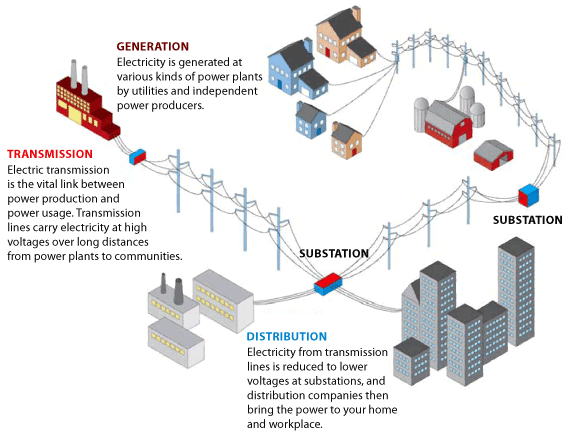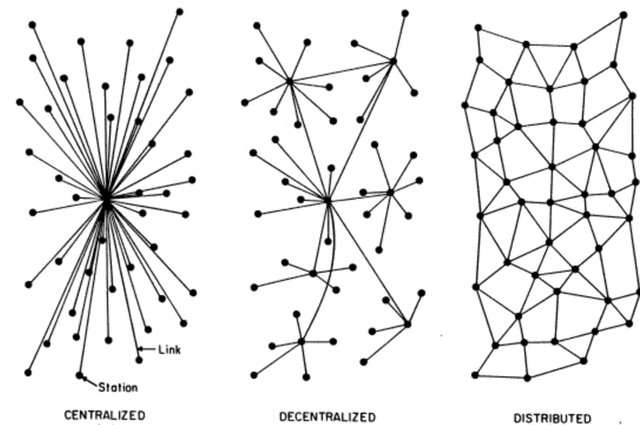Fundamentals of the Electricity Revolution - Part 1: Background, Drivers & Solutions
This is part 1 of a 4-part series looking into the role of energy storage, grid intelligence and blockchain in the coming revolution in electricity delivery. It is also my first ever post.
Background
The model for electricity delivery has not fundamentally changed since the inception of the grid - in the English city of Newcastle - just over a century ago.
There are 4 distinct functions in this model:
1. Generation: electricity is generated at centralised power plants by some means, be it from burning hydrocarbons, leveraging nuclear reactions or more recently, from harnessing renewable energy resources.
2. Transmission: networks then shift the electricity radially over long distances, from the power plants to more localised consumer networks.
3. Distribution: distributors then ensure delivery from transmission hand-off to consumer locations.
4. Provision: retailers provide services to consumers, such as metering and billing.
Illustration of the traditional electricity grid. Image
Roots of transition
In the past, the 4 areas of responsibility were typically taken care of by a single, vertically integrated and, usually, state-owned monopoly.
In some markets, this monopolisation began being broken down through privatisation and deregulation. Initially the generation function was opened up to competition with the advent of Independent Power Producers (IPPs). More recently, governments have begun introducing regulations to enforce separation between the 4 areas ensuring no single entity controls the supply chain.
However, while electricity market liberisation continues to enable competition, driving cost reductions and innovation, the macro engineering of the delivery model has not changed. From an electron's point of view, the trip from generator to load remains the same as it did in 1912.
The general public's perception of this incumbent model has until now, seemed to be that it is fit for purpose. Understandable, given that it has been the status quo for generations. After all most of us receive affordable, reliable electricity, when and where we want it.
What more could we want?
The answer depends on the extent to which there is:
- Availability of technically and commercially feasible alternatives
- A critical mass of awareness of and desire for a better solution
Arguably we have reached the required threshold in both areas already.
The advent of distributed energy resources (DERs), the Internet of things (IoT) and Blockchain conceptually begins to make the legacy grid look sub-optimal from engineering, process and economic view points.
And with consumer experience of the improved services delivered by more distributed systems being boosted by game-changing developments in other industries - pioneered by companies such as Airbnb and Amazon - electricity consumers are likely to snap up equivalent offerings.
Legacy barriers
Today, the cost of the kWh supplied to consumers is only a fraction of the price invoiced. Unfortunately, the bulk of the price covers inefficiency:
- Electrical inefficiency associated with moving electrons hundreds of miles with multiple conversions en-route.
- Organisational inefficiency - the industry remains dominated by large organisations typically still lacking the market competition required to incentivise streamlining.
- Commercial inefficiency - we pay retailers to cover the costs of their delinquent debtors, billing systems, mass marketing, legal compliance and much more.
These are well understood issues but they can only be solved to a certain extent within the existing structure. A paradigm-shift is required to move forward.
So where are we heading?
The trends reveal we are heading towards a more sustainable, more socially-responsible, more local, more resilient and more democratic electricity delivery model. All of this with the added bonus of cost-rationalisation.
Everything from generation to ownership to network topology will become increasingly distributed. Consumers will own DERs, trading energy both ways and providing grid services, becoming 'prosumers'. Prosumers will trade peer to peer in real-time. The retail function will become increasingly redundant.
DERs will be pool-owned autonomous assets. The majority of energy generated will be consumed within hundreds of meters rather than hundreds of miles. Energy storage will enable RE to dominate new capacity making electricity delivery cleaner and less carbon intensive.
The evolution of virtual computer networks - a conceptual representation of where electricity networks are heading. Image: Paul Baran, 1964
We won't get there in one step. This won't be a re-design from the bottom up. This will be a continuous series of retro-fit upgrades to our existing infrastructure & it's peripheral processes. Each step bringing incremental optimisations and greater understanding of where we are heading.
What are the drivers?
The deregulation of energy markets is a significant prerequisite. Where this is condition is met, the paradigm-shift requires two key drivers:
- good old-fashioned capitalism and;
- groundbreaking, enabling technology.
Given that (1) is effectively a constant, this series will focus entirely on (2).
Game-changing technology
Three key areas of disruptive technology are evolving into game-changers for the electricity sector:
- Energy storage
- Grid intelligence - broadly consisting grid control technology and Internet of things
- Blockchain
The blistering pace of cost reduction, innovation and maturity across these areas is enabling them to converge in the coming years to form the backbone of the future electricity model. Over the coming weeks we will look into each of these three technologies in more detail, to understand their role in the coming electricity revolution. Stay tuned.


Congratulations @rynergy, you have decided to take the next big step with your first post! The Steem Network Team wishes you a great time among this awesome community.
The proven road to boost your personal success in this amazing Steem Network
Do you already know that awesome content will get great profits by following these simple steps, that have been worked out by experts?